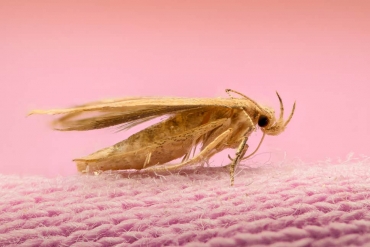*ELHAM SAMADI
TEHRAN(SANATNAMA)The temperature at which you wash your clothes could lead to a drastic rise in the quantity of moths in your home, it’s been reported.
From April to May this year, the number of customers calling Rentokil Pest Control with moth infestations increased by more than 110 per cent.
While this could be in part due to the extremely warm temperatures recorded in May, it could also be down to the British public’s laundry habits.
Read more
The world's oldest fabric is having a moment — and it's moth-resistant
A survey of 2,006 Rentokil customers explored how the temperature of one’s washing machine could be linked to the moth epidemic.
The results of the study revealed that 54 per cent are more likely to wash their clothes at 30 degrees Celsius than they would have been just five years ago.
When a wash cycle is set at a lower temperature, this could provide moths with a greater chance of survival than if it were set at a higher temperature.
However, it’s not just the heat of the wash that could be to blame for the rampant multiplication of the insects.
Once-extinct moth has recolonised large parts of the UK
It could also be related to the quality of clothing that people buy, as moth larvae are particularly attracted to materials that contain a natural protein called keratin, which can be found in higher-priced materials such as wool, silk and fur.
59 per cent of those questioned as part of the study stated that they prefer to buy clothes of a high quality that will last longer.
However, clothes that are made from the aforementioned materials are very enticing for moths, who feed on the keratin protein.
Read more
Migrant moths arriving from Europe to eat Britain's ivy
“May’s unseasonably warm temperatures and the early start to summer has helped to create the perfect conditions for moths to breed and potentially thrive in British households,” says David Cross, head of the technical training academy at Rentokil Pest Control.
“With a prolonged breeding season, clothes and soft furnishings in British homes could be at increased risk to damage caused by moth larvae feeding on the natural fibres they contain.”
According to the study, approximately 6.8 million Brits have had items of clothes and furniture marred by moths in their homes, with jumpers being the most commonly damaged item.
“Clothes moths love natural fibres and are difficult to eliminate. It is the larvae, however, that do the damage,” explains Paul Bates, managing director of pest control company Cleankill.
END NEWS/

